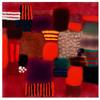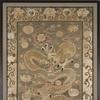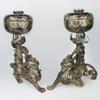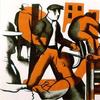Saint Louis Art Museum highlights acquisitions of modern and contemporary Japanese Art
- ST. LOUIS, Missouri
- /
- June 19, 2017
The Saint Louis Art Museum will present “A Century of Japanese Prints,” an exhibition featuring more than 70 of the finest examples of the museum’s collection of modern and contemporary Japanese prints, two-thirds of which have never been on view at the museum. The exhibition opens Aug. 11 in Galleries 234 and 235.
The museum recently celebrated the depth of its collection of Meiji-period military art with the exhibition “Conflicts of Interest: Art and War in Modern Japan.” The upcoming exhibition also highlights Japan’s visual culture, but it focuses on non-military works that reveal the creative approaches to modern Japanese printmaking.
The museum has been building its collection of modern and contemporary Japanese prints since the early 1980s through donations of works as well as purchases made possible by the William K. Bixby Trust for Asian Art, the Langenberg Endowment Fund and the Margaret and the Irvin Dagen Fund for Modern and Contemporary Japanese Prints.
“The museum is pleased to provide the public with an opportunity to enjoy this extraordinary and growing area of the museum’s collection,” said Brent R. Benjamin, the Barbara B. Taylor Director of the Saint Louis Art Museum. “An exhibition like this would not be possible without generous private support for important acquisitions, including some made quite recently.”
Recent acquisitions on view in “A Century of Japanese Prints” include Hashiguchi Goyō’s “Woman Combing Her Hair,” which the museum acquired in March. The print depicts one of the artist’s favorite models untangling her long tresses after a bath. Goyō, who trained in Western-style painting, was part of a movement that revived Japan’s woodblock printing industry through the creation of shinhanga, or “new prints,” which brought a modern sensibility to the traditions of ukiyo-e. Goyō employed expert block carvers and printers to execute his designs to the highest production values.
The exhibition also will include the important 2016 acquisition “Tipsy,” a renowned print by Kobayakawa Kiyoshi depicting a so-called modern girl—Japan’s answer to the 1920s flapper. With her slick bob, short skirts, and unprecedented levels of personal autonomy, the modern girl both scandalized and fascinated Japanese society. Lavishly printed with deluxe finishes, including a frosting of mica on her cocktail glass, “Tipsy” is arguably the most captivating representation of Japan’s jazz age.
“Impression of a Violinist (Portrait of Suwa Nejiko)” by Onchi Kōshirō offers a darker glimpse of Japan’s recent history. The violinist Suwa rose to fame in Europe under the Third Reich, but was repatriated following Japan’s defeat. Onchi, a central figure of modernism in Japan, attended a recital by Suwa for American occupational forces. Moved by the performance, he created this portrait. Her instrument, likely a gift presented in 1943 by the Nazi propaganda minister Joseph Goebbels, is now suspected of being a Stradivarius stolen from a Jewish owner.
The revival of Japanese printmaking in the early 20th century benefited from the activity of a number of non-Japanese artists. Introducing this story is a newly acquired impression of “Aoyagi,” the ghostly willow maiden of Lafcadio Hearn’s “Kwaidan,” by Bertha Lum. Iowa-born Lum sought instruction from printmakers while sojourning in Japan and entered her works in society exhibitions there. Charles A. Lowenhaupt recently gave two contemporary prints by the Japanese-trained Scottish artist Paul Binnie, an accomplished printmaker who regularly exhibits in Japan. Binnie’s prints speak of the continuing vitality of woodblock prints as an art form across the globe.
“A Century of Japanese Prints” is curated by Rhiannon Paget, who recently served as the museum’s A. W. Mellon Fellow for Japanese Art. The exhibition will be on view through Jan. 28, 2018.




10270x400_c.jpg)
















